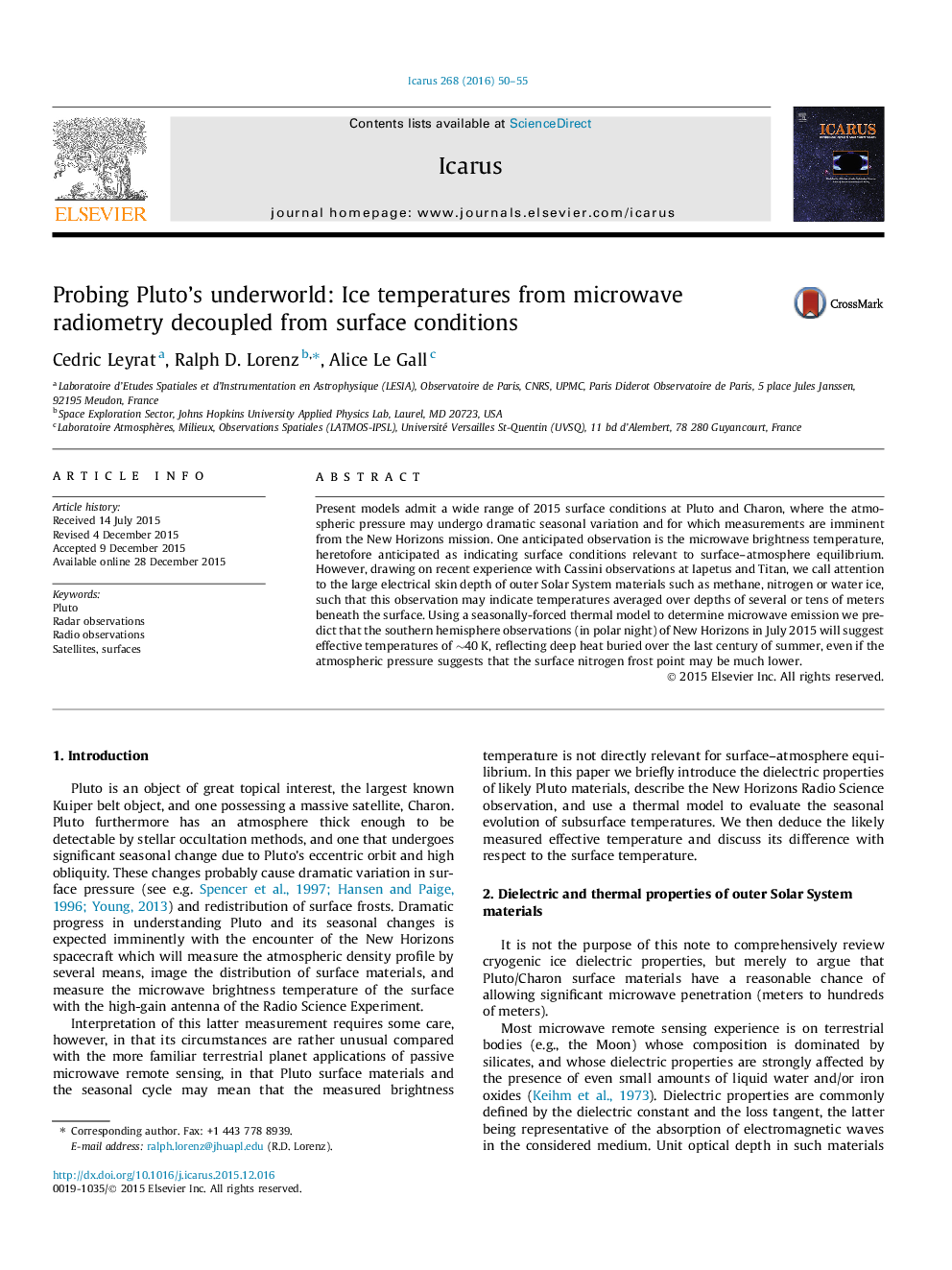| Article ID | Journal | Published Year | Pages | File Type |
|---|---|---|---|---|
| 8135558 | Icarus | 2016 | 6 Pages |
Abstract
Present models admit a wide range of 2015 surface conditions at Pluto and Charon, where the atmospheric pressure may undergo dramatic seasonal variation and for which measurements are imminent from the New Horizons mission. One anticipated observation is the microwave brightness temperature, heretofore anticipated as indicating surface conditions relevant to surface-atmosphere equilibrium. However, drawing on recent experience with Cassini observations at Iapetus and Titan, we call attention to the large electrical skin depth of outer Solar System materials such as methane, nitrogen or water ice, such that this observation may indicate temperatures averaged over depths of several or tens of meters beneath the surface. Using a seasonally-forced thermal model to determine microwave emission we predict that the southern hemisphere observations (in polar night) of New Horizons in July 2015 will suggest effective temperatures of â¼40Â K, reflecting deep heat buried over the last century of summer, even if the atmospheric pressure suggests that the surface nitrogen frost point may be much lower.
Related Topics
Physical Sciences and Engineering
Earth and Planetary Sciences
Space and Planetary Science
Authors
Cedric Leyrat, Ralph D. Lorenz, Alice Le Gall,
